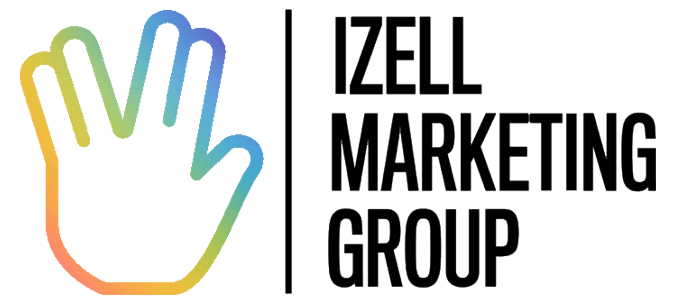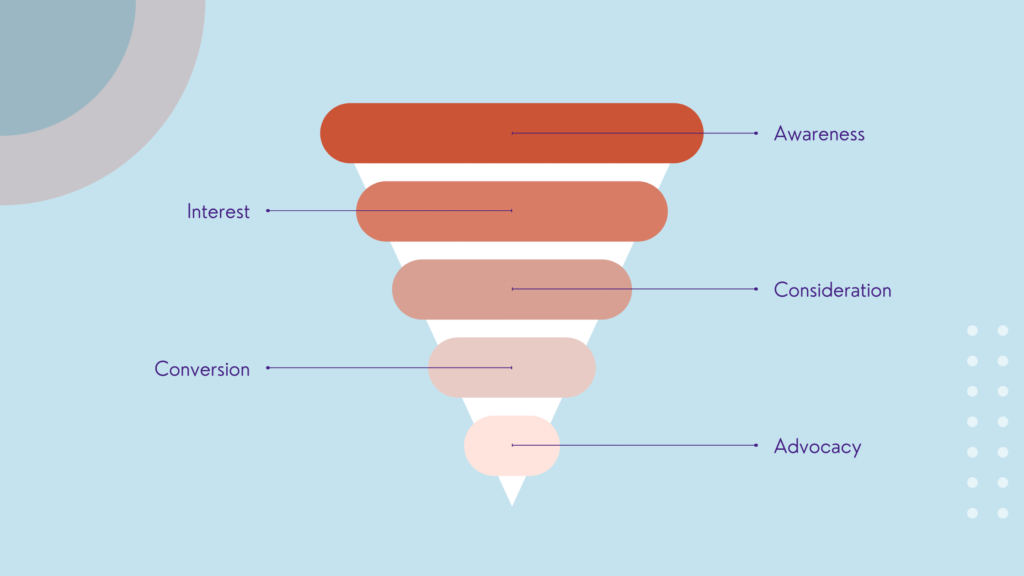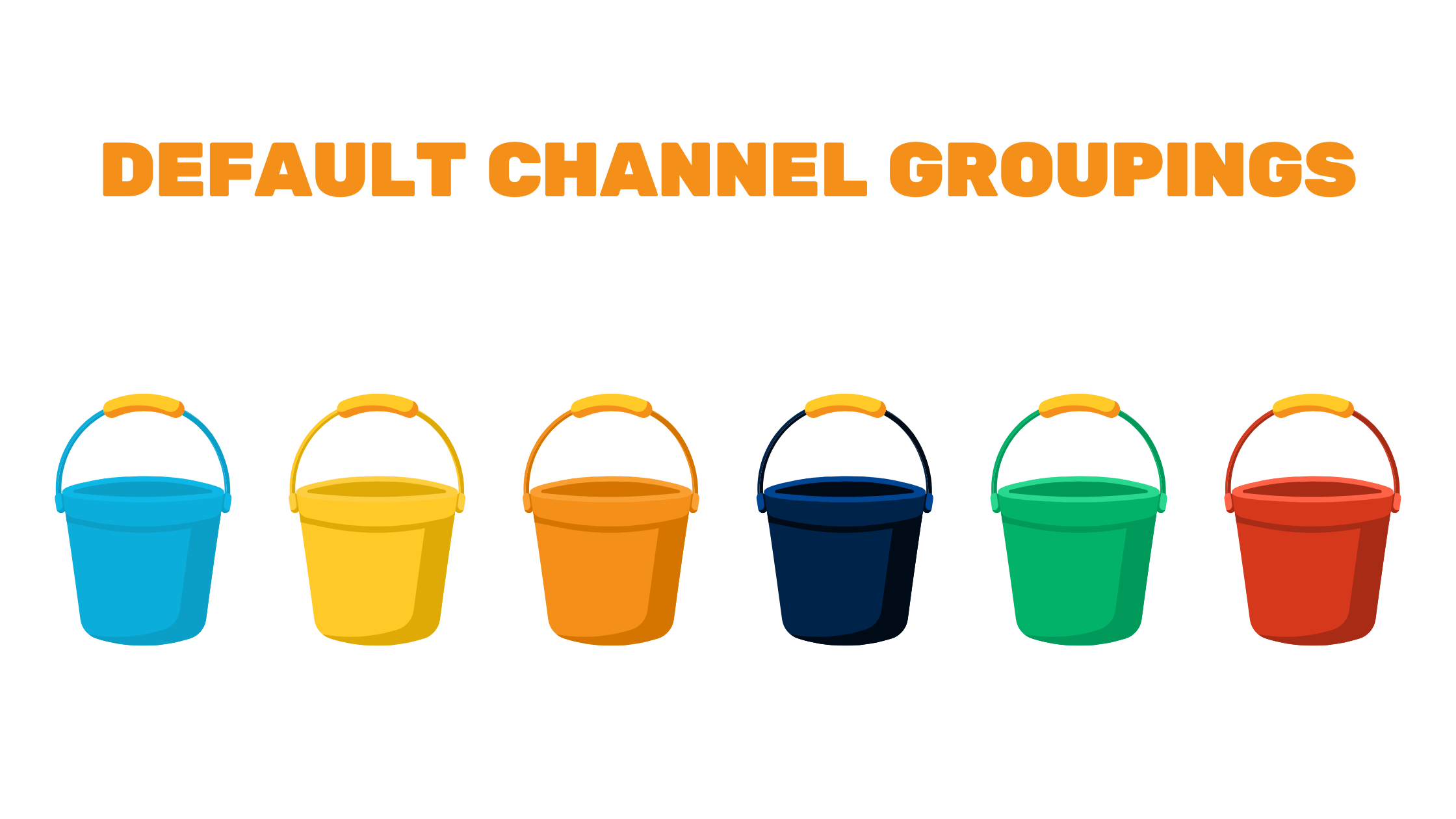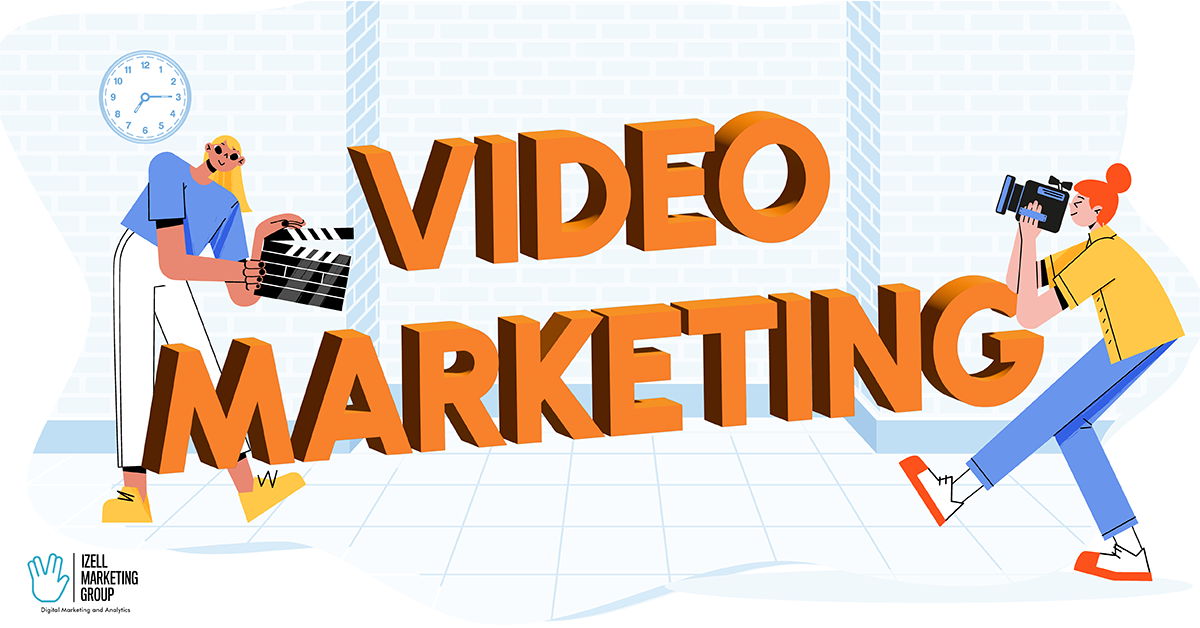Essentials for a Digital Marketing Strategy
A digital marketing strategy needs to be customized to your business model and resources. There is no one-size-fits-all solution, but there are some essential components of digital marketing that need to be incorporated to cover your initial marketing funnel.
Any marketing funnel is looking to address users at these broad stages:
- Awareness
- Interest
- Consideration
- Conversion (Action)
Before we can even start an awareness campaign, though, we must do some preliminary work to define audiences and create a plan for moving them through the funnel.
The illustration below is an example strategy we developed a few years ago for a pre-product startup. This is just one example; the essential components can be adapted to most plans.
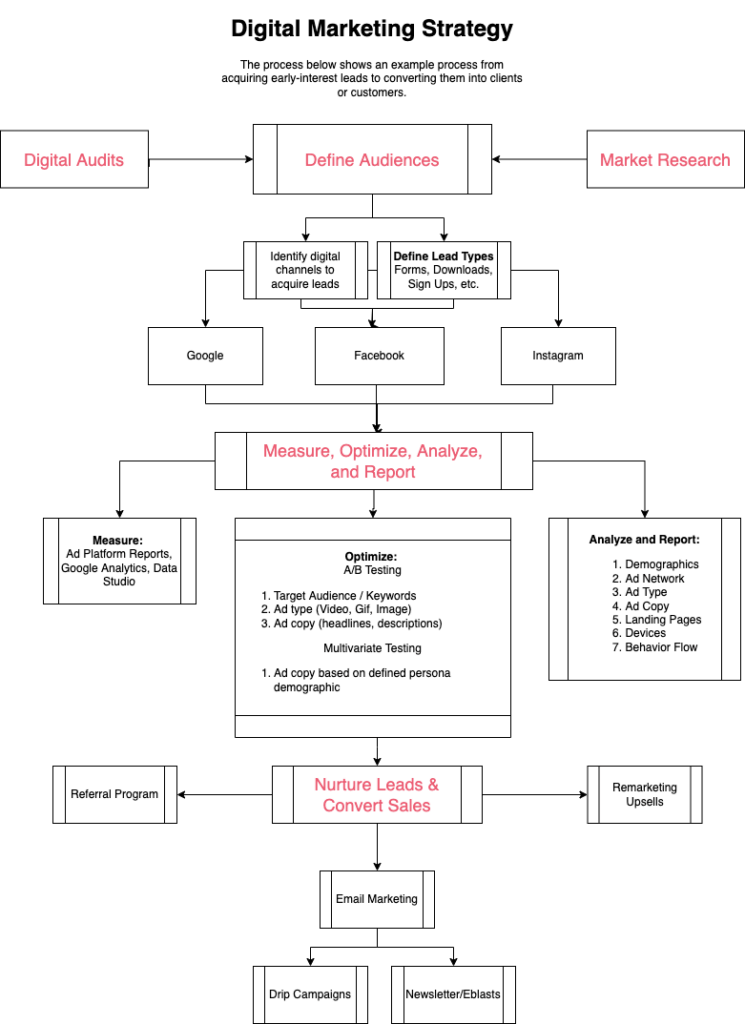
Let’s break down the three primary sections:
- Defining Audiences
- Measure, Optimize, Analyze, and Report
- Nurture Leads & Convert Sales
Defining Audiences
Defining marketing audiences is not as simple as just building buyer personas. For digital marketing, you must be able to define an audience in the context of how you will be able to reach them at every stage of the marketing funnel.
We use two methods for this stage: market research and digital audits.
We put together a guide for doing keyword research in a way that helps you identify niche opportunities. Digital audits are useful if you already have a website and/or have already tried doing some marketing.
While audiences are being defined, they should be mapped to acquisition channels. Consider:
- Which social media platforms are best for engaging your audiences?
- Which paid advertising platforms and campaign types will achieve your marketing goals? *In the diagram, goals are illustrated as “lead types.”
- Specifically, which platforms are best for awareness, interest, consideration, and conversion? It’s likely a combination.
Measure, Optimize, Analyze, and Report
The greatest advantage of digital marketing compared to traditional marketing is that it’s measurable with data.
In the diagram, we break down what you need to use for measurement, what you need to optimize, and the dimensions you need to analyze and report.
Measure
To measure your efforts, use the data on your ad platforms and social media reports to see specifically how you’re doing with achieving awareness and interest. You’ll usually look at reach and impression numbers. For measuring interest, you’ll want to look at engagement metrics like clicks.
As you get to the consideration and conversion stages of reporting, you’ll need additional reporting tools. Use Google Analytics on your website to track user behavior, and if you are a data nerd, get your dashboards set up on Google Data Studio.
Optimize
Optimization is simply a process of testing variables to see what has the best chance of achieving your goals. The diagram lays out some examples of what to optimize:
- Target Audiences and Keywords
- Ad types (video, gif, image)
- Ad copy (headlines and descriptions)
- Ad copy based on defined persona demographics
Analyze and Report
When advertising online, you’ll need to look at how you’re performing across multiple dimensions. Assuming you have established a PPC strategy(and if you have not, disreguard the ones mentioning ads), start with these dimensions:
- Demographics
- Ad Network
- Ad Type
- Ad Copy
- Landing Pages
- Devices
- Behavior Flow
Nurture Leads and Convert Sales
Whether you’re generating leads or sales, this stage will employ similar methods. An email marketing strategy must be implemented for nurturing opportunities. If you do nothing else, set up email campaigns for your lead lists and customer lists.
You can also use these contact lists for remarketing campaigns on all major digital ad platforms.
Lastly, consider turning your existing customers into ambassadors by employing a referral marketing platform.
